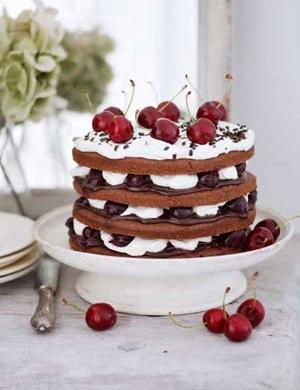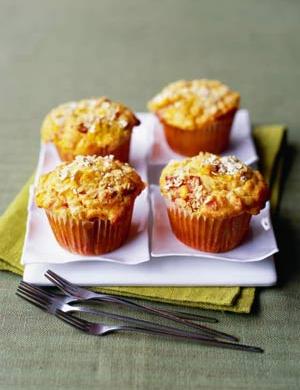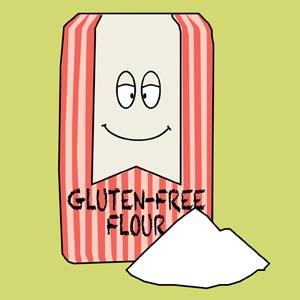Food
Top gluten-free baking tips
by Sarah Alcock
With more and more people going gluten-free, there will probably be a time when home bakers will be asked to rustle up a gluten-free alternative for the office cake sale, a birthday party or for afternoon tea. There are a few key things that it's handy to know before embarking on your first gluten-free bake.
Content editor Sarah met the founder of Genius Gluten Free, Lucinda Bruce-Gardyne and got a few top tips for first time gluten-free bakers...
WHAT IS GLUTEN?
Gluten is a protein found in grains including wheat, barley, rye, and sometimes oats. Wheat is the most common base for flour, producing light, chewy and open-textured bread because of its high gluten content. Gluten binds the ingredients, trapping and stretching around expanding bubbles of air, rather like bubble gum, lightening and enabling bread to rise and form its familiar texture.
WHAT IS COELIAC DISEASE?
Coeliac disease is an autoimmune condition where the immune system mistakes substances found inside gluten as a threat to the body and attacks them. This damages the surface of the small intestine, leading to difficulty in digesting food. Eating foods containing gluten can cause abdominal pain, bloating, weight loss and fatigue.
THE BEST GLUTEN-FREE FLOURS
Some of the most useful gluten-free flours include potato flour, tapioca flour, rice flour, cornflour and buckwheat flour, all with their own characteristics. Potato and cornflour have good binding properties whereas fine rice flour can be used to provide bulk.
FOOD TEAM TIP: There are lots of flour blends (self-raising, plain, bread) readily available to buy now, which are made of a perfect blend of gluten-free flours, so it's all done for you. We like Doves Farm.
KEY CHARACTERISTICS OF GLUTEN-FREE FLOUR
Most gluten-free flours do not absorb liquid as readily as wheat flour and often produce baked goods that taste dry and crumble easily unless extra egg or liquid is added to the recipe. It's important to understand how to blend gluten-free dry ingredients together to avoid pitfalls like this.

(Try our gluten-free chocolate cherry trifle cake)
CAN I SUBSTITUTE?
The properties of regular wheat flour are extremely complex mainly thanks to the gluten. It is rarely possible to simply substitute wheat flour with a single variety of gluten-free flour. This is particularly true in recipes that rely on flour to create their characteristic structure and texture, such as bread, pastry and heavier cake varieties like muffins.
To make great gluten free equivalents the wheat flour must be replaced with a combination of different gluten-free flours along with binding ingredients such as eggs and xanthan gum to help bind the mixtures together and support the structure during and after baking.
FOOD TEAM TIP: Most bought gluten-free bread flours already contain xantham gum needed for structure.
RECIPES WHERE A SIMPLE FLOUR SWAP WILL WORK...
There are many recipes that use a smaller proportion of wheat flour to thicken or gently set the structure and in these cases wheat flour can be replaced with a single gluten-free flour. For example: moist batter cakes like brownies can simply substitute plain flour with potato flour. For a roux or for thickening sauces try corn flour or rice flour. And for pancakes, try buckwheat flour.

(Try our gluten-free chorizo, sweetcorn and tomato muffins)
MAKING GLUTEN-FREE PASTRY
Wheat flour binds pastry dough, which helps to hold the pastry together when you are rolling it out and lining a tart tin. Use beaten egg to bind gluten-free ingredients together and knead the pastry dough until smooth to ensure the liquid has been properly absorbed. Gluten-free pastry is more delicate to handle than wheat pastry so roll it out to the required thickness between two sheets of cling film or baking paper.
HIDDEN GLUTEN IN PRODUCTS
Watch out for a few household products that have hidden gluten: sausages and meatballs often contain 'rusk' - or white breadcrumbs. Check for sauces that include Worcestershire sauce or soy sauce. Some powdered ingredients can also contain wheat flour as a bulking agent. These include baking powder, mustard powder, spice mixes, stock cubes and cocoa.

Genius Gluten Free has updated its core bread range with the introduction of new and improved recipes, offering an enhanced nutritional profile, whilst still maintaining the same award winning flavour. For more information visit www.geniusglutenfree.com












